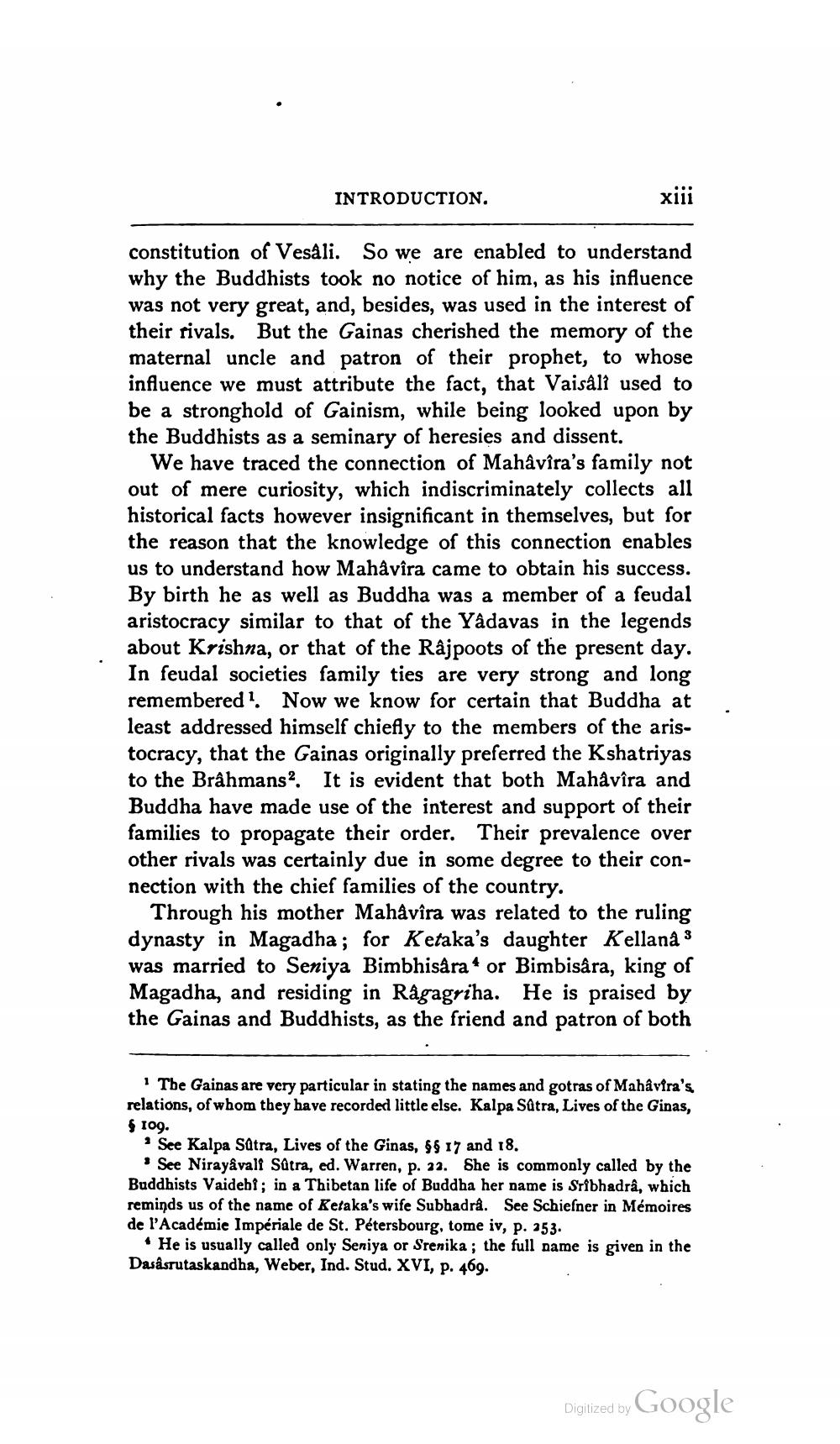________________
INTRODUCTION.
xiii
constitution of Vesåli. So we are enabled to understand why the Buddhists took no notice of him, as his influence was not very great, and, besides, was used in the interest of their rivals. But the Gainas cherished the memory of the maternal uncle and patron of their prophet, to whose influence we must attribute the fact, that Vaisali used to be a stronghold of Gainism, while being looked upon by the Buddhists as a seminary of heresies and dissent.
We have traced the connection of Mahavira's family not out of mere curiosity, which indiscriminately collects all historical facts however insignificant in themselves, but for the reason that the knowledge of this connection enables us to understand how Mahâvîra came to obtain his success. By birth he as well as Buddha was a member of a feudal aristocracy similar to that of the Yadavas in the legends about Krishna, or that of the Rajpoots of the present day. In feudal societies family ties are very strong and long remembered?. Now we know for certain that Buddha at least addressed himself chiefly to the members of the aristocracy, that the Gainas originally preferred the Kshatriyas to the Brâhmansa. It is evident that both Mahâvîra and Buddha have made use of the interest and support of their families to propagate their order. Their prevalence over other rivals was certainly due in some degree to their connection with the chief families of the country.
Through his mother Mahavira was related to the ruling dynasty in Magadha; for Ketaka's daughter Kellana 3 was married to Seniya Bimbhisâra* or Bimbisâra, king of Magadha, and residing in Rågagriha. He is praised by the Gainas and Buddhists, as the friend and patron of both
The Gainas are very particular in stating the names and gotras of Mahavira's relations, of whom they have recorded little else. Kalpa Sätra, Lives of the Ginas, 1og. * See Kalpa Satra, Lives of the Ginas, 9617 and 18.
See Nirayávall Satra, ed. Warren, p. 22. She is commonly called by the Buddhists Vaidebt; in a Thibetan life of Buddha her name is Sribhadrâ, which reminds us of the name of Retaka's wife Subhadrå. See Schiefner in Mémoires de l'Académie Impériale de St. Pétersbourg, tome iv, p. 253.
• He is usually called only Seniya or Srenika; the full name is given in the Dasåsrutaskandha, Weber, Ind. Stud. XVI, p. 469.
Digitized by Google




